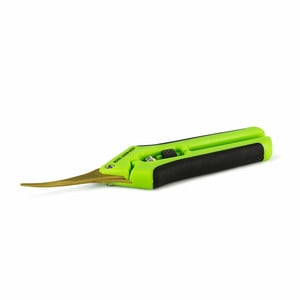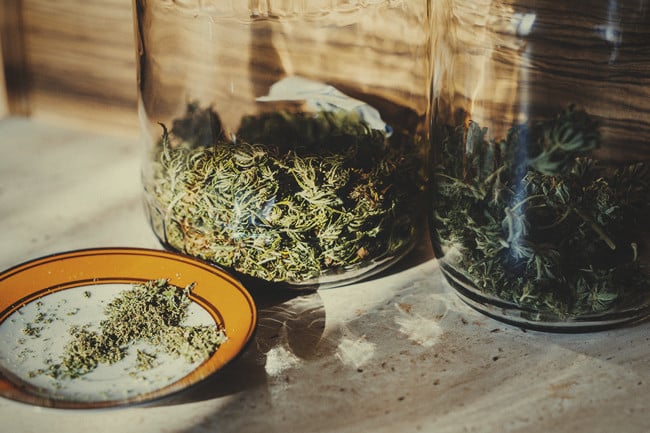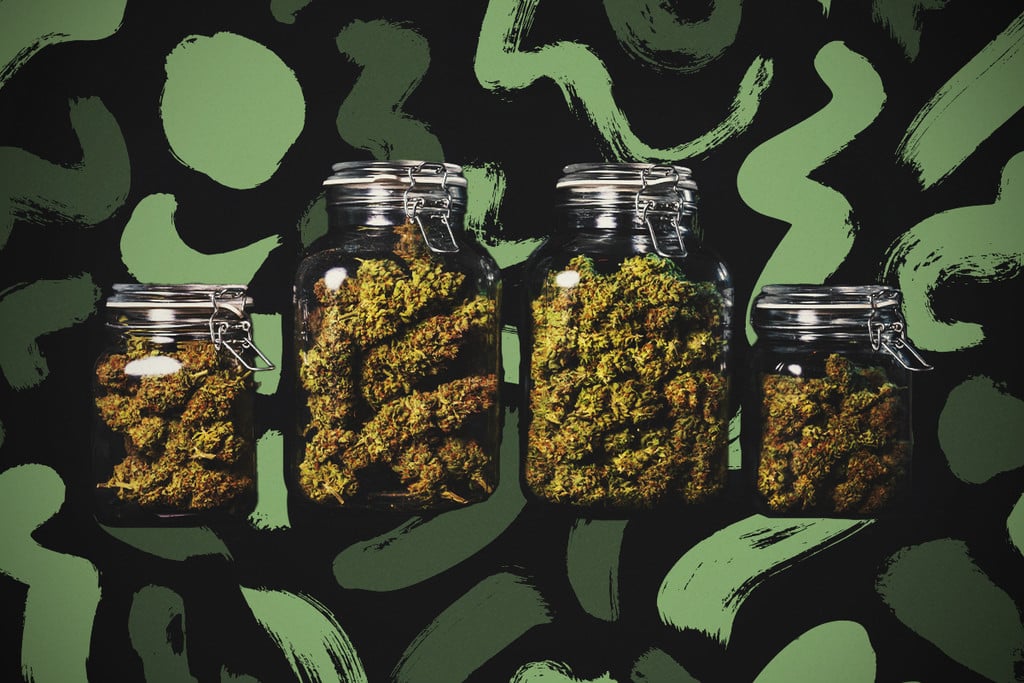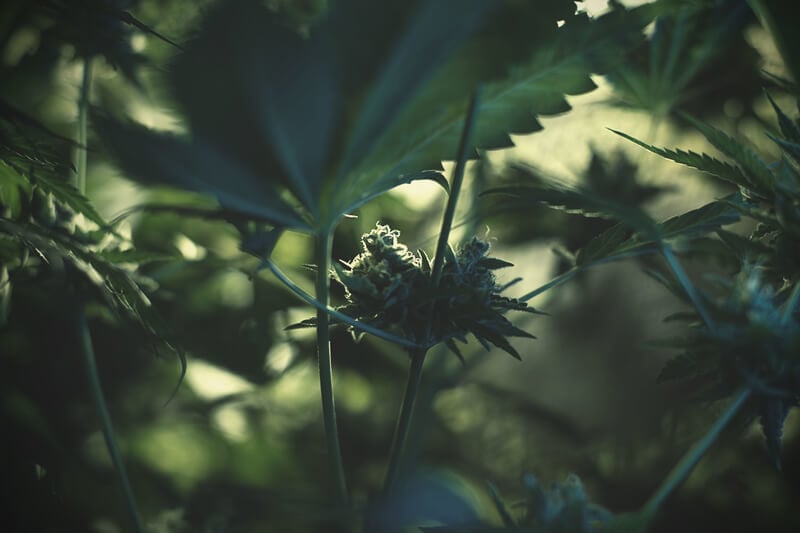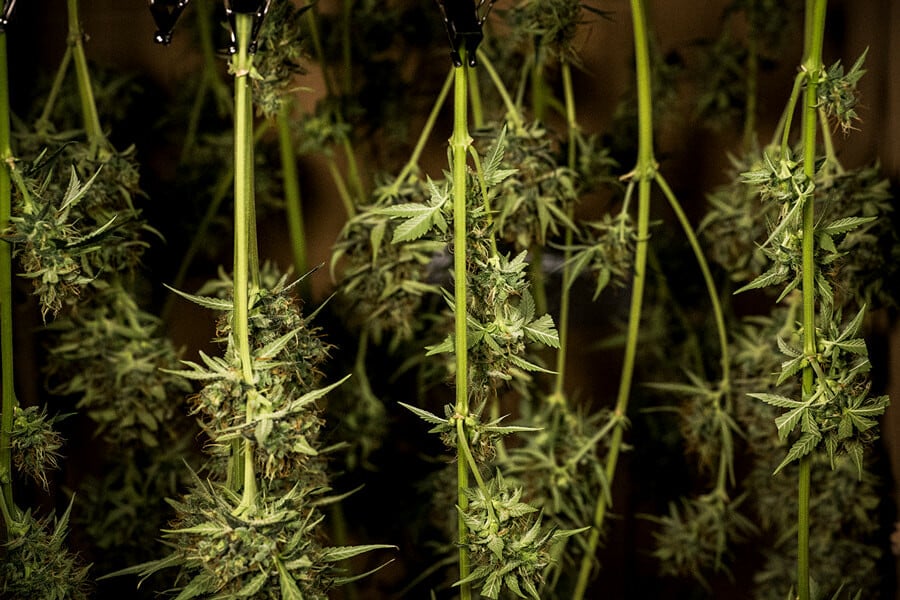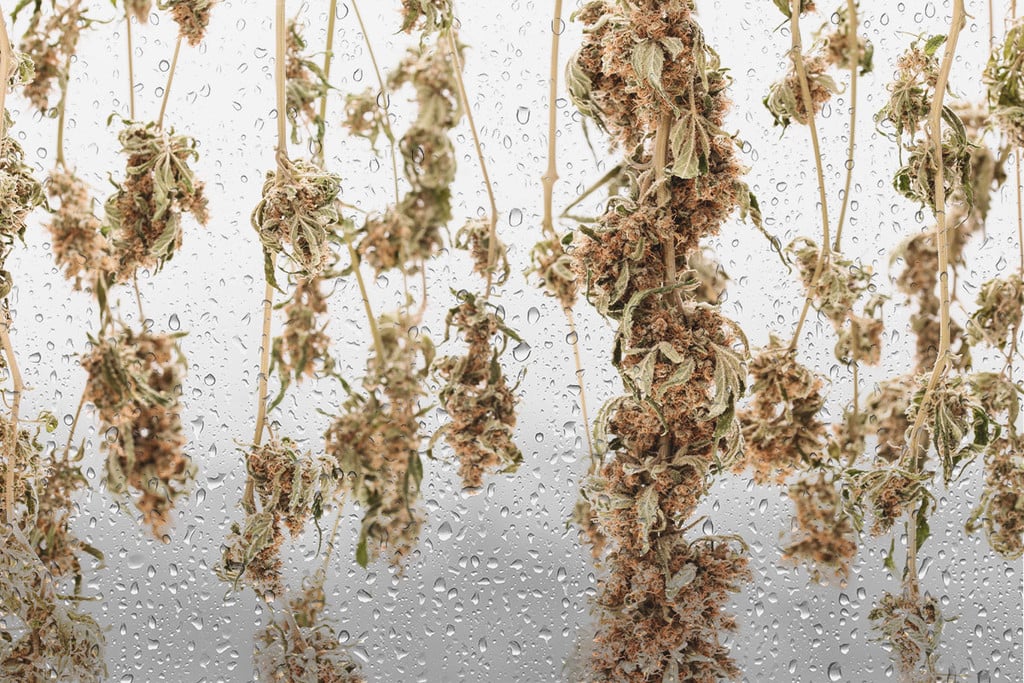.
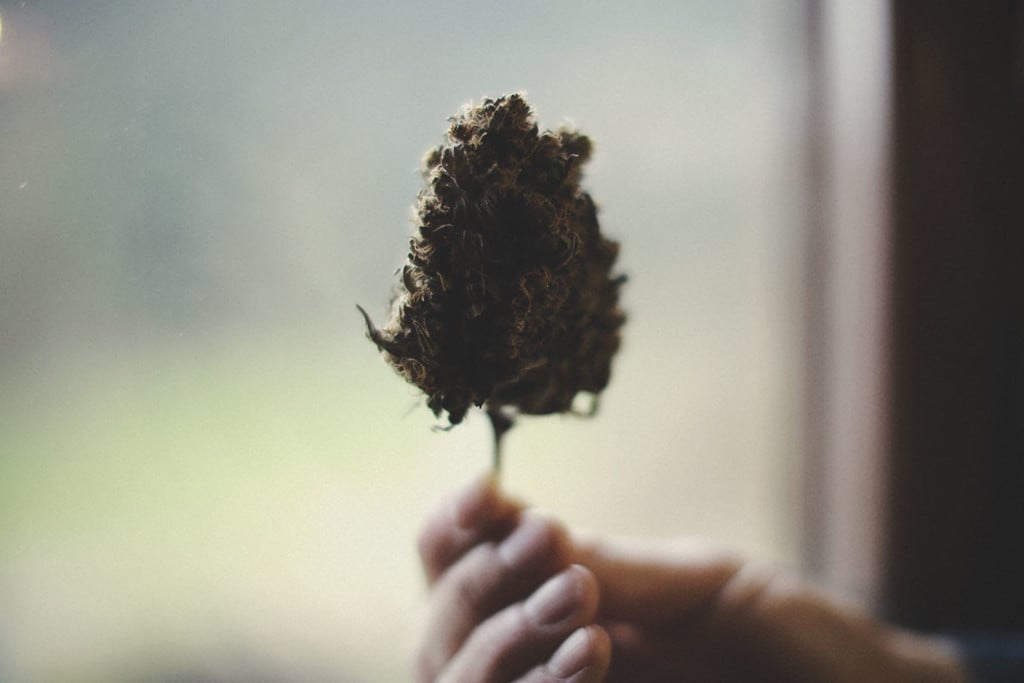
How To Differentiate Good From Bad Quality Marijuana Buds
Many think they can tell the difference between good and bad-quality bud just by giving it a once-over, but there are certain nuances people don’t consider. In this guide, we’ll walk you through each distinction, and offer some key tips on how to grow premium-quality cannabis buds.
How to tell the difference between good and bad cannabis buds.
Contents:
It probably didn't take long after you started smoking weed to realize the differences between cannabis buds. Despite how everyone claims their weed is top-notch, you've probably noticed when the flower just isn’t up to par. In contrast, when you’re holding quality cannabis, you know it right then and there.
To ensure you only buy the best buds, learning the differences between top-shelf fire from rugged brick weed is vital. You don't need to be a connoisseur either, as the differentiating traits can be seen and smelled with no assistance. Learning the differences will help you browse the shelves, sure, but it’ll especially help you judge the plants in your own garden. That, in turn, will help you make any necessary adjustments.
Types of Cannabis Buds
Cannabis flowers can be categorised into various quality spectrums. You could be talking about stickiness, terpene profile, taste, texture, or an assortment of other factors. To keep things simple, we've narrowed things down to three basic categories: low, medium, and premium-quality bud.
Low-Quality
Low-quality cannabis has a sorry look to it, mostly because it travels long distances after being stuffed into small packages. Known rightly as “brick weed”, these buds often arrive at their destination as dense cubes.
Rarely grown for quality or with much care at all, the producers associated with this level of cannabis are purely profit-driven. Often a black market product, low-quality cannabis typically stems from south of both the US border and the European continent.
Of course, some home growers with the intention to sell may also accidentally produce cannabis of similar quality. Novice growers will often mess up during the process and leave themselves with dry, unremarkable buds.
The key signs of low-quality cannabis include:
Medium-Quality
Domestic growers all over the world mostly produce buds that fall into this category. These flowers are set apart from poor-quality cannabis thanks to their improved colouration, heightened scents, and overt flavors.
Most growers manage to dial in their nutrients, watering schedule, and environmental variables enough to produce cannabis of this quality. The most important factor, though, is putting pride and effort into their work.
If you're looking for medium-quality bud, or simply trying to dodge the bad stuff, look for these traits:
Premium-Quality
High-grade. Top-shelf. Fire.
Premium-quality bud goes by many names, yet they all describe its immense flavor and mind-shattering effects. These buds are hard to come by outside of big cities and weed-growing areas. Generally, they’re the products of skilled farmers and master breeders in hotspots like Northern California, Spain, and the Netherlands.
You'll find these nugget-like buds encased in jars on the shelves of reputable dispensaries and highly-rated coffeeshops. If you're looking for the best buds money can buy, keep an eye out for the following:
How to Differentiate Good Buds From the Bad: A Guide
We hope the above generalisations make it easier to distinguish the quality of a given bud, but it can get a bit more complicated. Below, we’ll get into the nitty-gritty and inspect cannabis flowers a little closer.
Aroma
As we discussed before, aromatic molecules known as terpenes are responsible for said signature scent.
Despite the similar undertone, though, most strains feature unique smells thanks to different concentrations of terpenes.
You're probably familiar with the small, shiny structures on the surface of cannabis buds and sugar leaves. These mushroom-shaped glands—trichomes—pump out terpenes during the flowering stage.
You'll know you're dealing with good-quality weed when the olfactory wave of terpenes hits straight after opening your stash. While a pleasing scent and cannabis quality aren’t unconditionally connected, the former is a likely indication of the latter. Hints of flowers, fuel, earth, spices, sugar, fruit, citrus, and berries are among the most common aromas.
The quality of a strain's terpene profile depends on several variables:
- Genetics: Some strains are genetically equipped to pump out more aromatic terpenes than others, mostly due to selective breeding practices.
- Drying and curing: Genetics only achieve so much. Correctly drying, curing, and storing cannabis will preserve the terpene profile and make for better-tasting buds.
- The right nutrients: During the flowering stage, cannabis plants have a higher demand for potassium and phosphorus and less of a need for nitrogen. Get this balance right, and you'll produce some fantastic-smelling flowers.
- Living soil: A strong microbial population will help plants access all of the nutrients they need to develop an optimal terpene profile.
- Companion planting: Many growers claim planting basil in close proximity to cannabis helps improve its smell.
Quick Growing Tip: Boosting terpenes will improve the overall smell and flavor of your plants. Select strains such as Lemon Shining Silver Haze and Haze Berry to start with a genetic advantage.
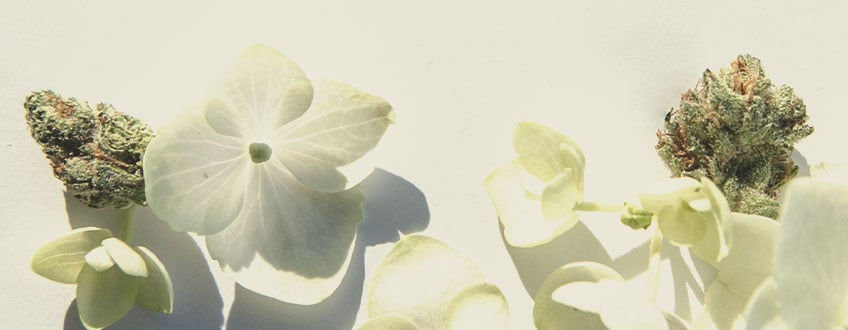
Color
Although you can't judge a book by its cover, you can definitely judge cannabis buds by their appearance. There are many factors that indicate quality to a trained eye, and color is one of the most important.
Of course, cannabis flowers come in an array of different hues of purple, orange, green, and red. It isn't so much the color that gives away quality, but more so the vibrancy.
See, healthy and well-grown cannabis flowers have a bright and shiny look to them.
Such vibrancy signals good genetics, solid growing techniques, and adequate curing and storage. In contrast, poor-quality cannabis appears matte, dull, and pallid. These buds are often dark green to brown, pale, and ultimately unappealing.
Quick Growing Tip: Flushing plants at the right moment will prevent excess nutrients from accumulating in flowers and eliminate nutrient burn.
Additional Tip: Play around with genetics and temperature to grow purple weed! Start with genetics like Purple Queen to increase your chances of success.
Orange/Brown Pistils
Upon looking closely at the surface of cannabis flowers, you'll come across a miniature landscape—valleys, peaks, and all—made up of different glands, organs, and structures. Among the scenery, the pistils protrude the most.
These hair-like tendrils are the sex organ of the female cannabis flower, serving as the receiver of male pollen. Once this genetic dust makes contact, the flower becomes fertile and swiftly goes to seed.
Away from their biological role, pistils serve as useful progress markers. During the early flowering stage, these reproductive parts boast a brilliant whiteness. As the weeks go by, their appearance turns to a solid dark orange.
You should always look for deep orange pistils when eyeing up buds. Harvest should ideally take place when at least 70% of the hairs turn this color. This indicates the buds are ripe, mature, and ready for snipping. Flowers with mostly white pistils signal immature cannabis. Left a while longer, these flowers will mature and unleash a complete cannabinoid and terpene profile.
Quick Growing Tip: Harvest at the right moment, ensuring pistils are the right color at the right time. You'll need to be patient when cultivating strains like Amnesia Haze, as they have a slightly longer flowering time.
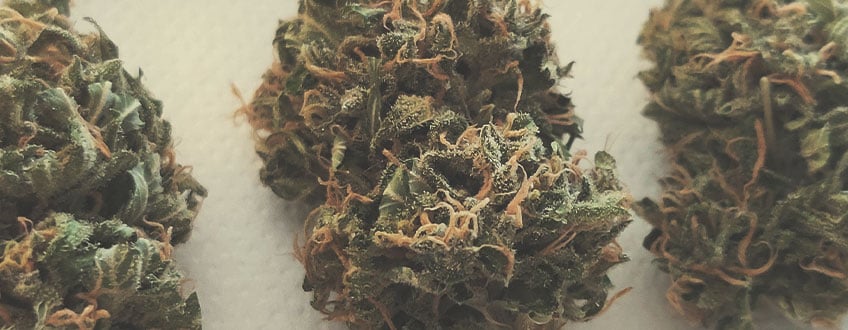
Crystals/Resin
Trichomes are the most abundant feature on the surface of good-quality flowers. To the naked eye, they appear as a fine layer of crystals that shimmer under torchlight or the flame of a lighter.
These mushroom-shaped structures feature a bulbous head atop a narrow stalk. In this head, specialized cells tasked with resin production work tirelessly during the flowering phase. The resin exudes downward and gradually covers the majority of the surface of the flower. This resin—and its active phytochemicals—help guard buds against insect attacks and temperature extremes.
The substance contains a complex array of molecules. Those of interest to us include cannabinoids such as THC and CBD, along with terpenes like myrcene, pinene, and limonene. The more trichomes a flower possesses, the more resin it will produce. The more resin coating the surface of a bud, the more cannabinoids and terpenes sit ready to be combusted, vaporized, or chewed and swallowed.
You'll be able to tell the trichome and resin content of a bud just by looking at it and holding it. Note how it glitters, the stickiness, and consider the resistance generated as you peel your fingertips from the flower.
Quick Growing Tip: Utilise environmental factors to boost trichome production. Strains such as ICE are genetically wired to develop high quantities of trichomes.
Dense/Fluffy
How buds feel in the hand says a lot about their quality. Every grower hopes for dense and heavy buds at the end of the growing season. These flowers simply hold more mass, look much healthier, and smoke smoother.
Grinding up dense cannabis flowers seems to almost double their size. Even a small chunk of a compact flower can grind down to fill a good-sized joint. In contrast, fluffy buds yield disappointment and less plant matter. These airy flowers are often the result of suboptimal growing conditions, a lack of light, or nutrient deficiency.
Fluffy buds don't only look less appetising, but you'll need to use more of your harvest every time you roll a blunt or hit a bowl. Dense buds will offer some resistance and spring back to their original shape. Airy buds will almost collapse in on themselves, and feel much more feeble to the touch.
Quick Tip: Sativa and indica flowers tend to look different; know what to look for when browsing.
Growing Tip: Utilise powerful lights to grow dense and compact flowers.
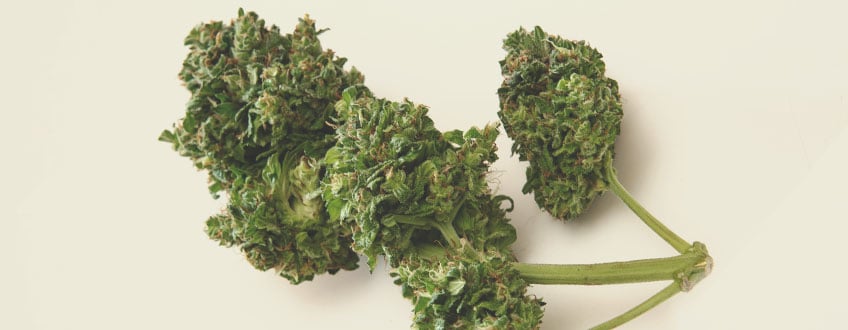
Seeds
The presence of seeds is never a sign of quality flowers. The very word sinsemilla—a name given to weed of exceptional quality—refers to flowers devoid of seeds.
Remember those protruding pistils we covered earlier? When pollen from a male plant lands on the tendrils, it starts a process of changing the biochemical activity of the cannabis flower. The plant diverts its energy and efforts away from producing sticky resin and towards making seeds instead.
Flowers with seeds don't reach peak potency and maturity because the resources are swallowed up by reproductive efforts instead. Cannabis seeds also make flowers heavier, meaning you end up paying more for less flower. If you buy one gram of weed and find 200mg of seeds nested within, you've wasted money. That might not seem like much, but consider that across 50–100 purchases, and that's a lot of lost bud.
Unnoticed seeds can also ruin a smoke session. Seeds pop when the flame of the joint hits them, disturbing your zen and sending harsh smoke into your lungs.
Quick Growing Tip: Learn how to avoid pollination to keep seeds out of your weed.
Stems
Smoking stems either boils down to an accident or an act of desperation. Stems contain minuscule levels of cannabinoids and produce a harsh smoke. However, the presence of stems in your bag doesn't necessarily indicate bad weed.
Rather, it shows a rushed preparation process. Plus, you paid for that extra weight! When browsing your local dispensary or coffeeshop, avoid buds with excess stems. Alternatively, simply ask the budtender to trim them off before you buy them.
Quick Tip: They're not as valuable as buds, but you can use stems to make a variety of homemade products, from hash to topicals.
Well-Trimmed vs Leafy
Trimming weed refers to removing the sugar leaves—small leaves that grow out of and around cannabis flowers. The presence of sugar leaves doesn't automatically render cannabis poor-quality, but it can make a big difference.
Well-manicured buds simply look great. Trimming gives the bud a nice nugget-like appearance, and the aesthetic is a near-universal trait of premium-quality flowers.
Secondly, excess sugar leaves will impact the weight of the flower. You want to be paying for buds, not leaves. Finally, the presence of sugar leaves can cause issues during the curing process. Small pockets of moisture can build up, creating a breeding ground for pathogens and impacting the taste of the weed.
Quick Growing Tip: You can trim your weed either before or after drying it.
Mold
Mold not only ruins the flavor of cannabis, but potentially causes health issues as well. Breathing in fungal spores can lead to anything from bad flavor to a full-blown lung infection.
Moldy weed reflects poor drying, curing, and storage practices. Fungi require high levels of humidity to persist, and mostly occur on living flowers, along with those cured in poor conditions.
Reputable dispensaries, growers, and coffeeshops should never stock moldy weed. Some companies even place magnifying tools on their countertops to allow customers to see for themselves. View moldy buds as non-smokable if you want to be safe, no matter how high-quality they seem otherwise.
Quick Growing Tip: Learn how to avoid mold when growing and curing your weed. Fungi-resistant strains such as Royal Moby are far less likely to succumb to mold.
Pests
The chances of seeing a pest nestled into your newly purchased buds are low. If pests were bothering the plant from which they came, the grower would likely have removed them before shipping them off for sale. Regardless, it still remains a possibility.
But what does finding pest insects on a cannabis flower tell you? It could mean that the growers neglected to protect their crop from an infestation. If the critters inflicted enough damage, the buds might’ve come from a stunted and underdeveloped plant. This means their overall quality might not be optimal.
In contrast, the presence of an insect also indicates a natural and organic growing practice. Although seeing an insect in your flowers isn't pleasant, most smokers would prefer removing bugs over inhaling pesticides.
Quick Growing Tip: Keep insects away naturally using biological pest control methods.
Sticky
The stickier the weed, the more potent it is likely to be. A higher resin content means high levels of cannabinoids. Premium-quality flowers will feel sticky in your hands, and some will even leave bits of resin on your palm. They may be harder to physically handle, but the high they offer will almost certainly be worth the extra effort.
Quick Growing Tip: Growing organic will guarantee the best-quality and cleanest cannabis.
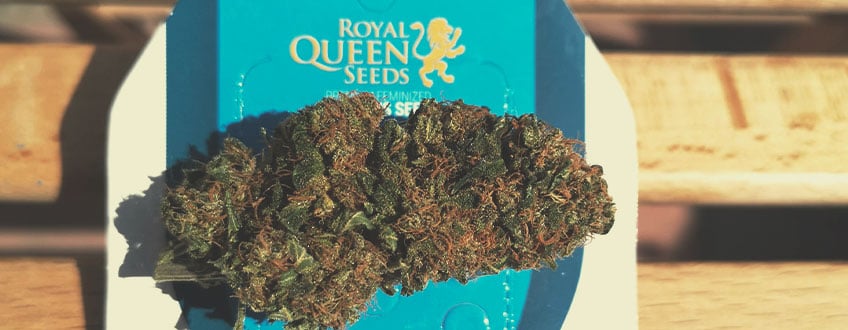
Taste
After reviewing all of the other attributes of your bud, the taste test completes the process. Tasting your buds—and feeling the effect thereafter—is the one true way of knowing what cannabis quality you're dealing with.
There are two main factors to consider when taking those first few hits: flavor and smoothness. Combined, both of these variables allow cannabis lovers to make an obvious distinction between low, medium, and premium-quality cannabis.
If you can sample some flowers you’re considering buying, let each inhalation settle on your tongue for a moment. Medium and high-quality flowers will leave obvious flavors of fruit, flowers, skunk, fuel, berries, or sweetness behind. In contrast, low-quality weed will be relatively flavorless, even hay-like in taste.
The smoothness of the smoke testifies to how well-cured the flowers are. Premium-quality buds, cured for the perfect amount of time, will produce a buttery smooth smoke. Low-quality weed will leave a harsh burning in the throat and give rise to a violent coughing fit.
Quick Growing Tip: Preserve the taste-forming molecules in your cannabis flowers with flushing, trimming, and curing.


























